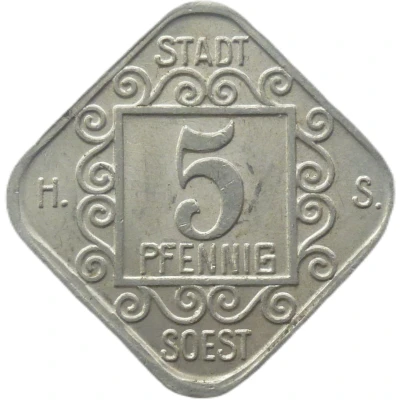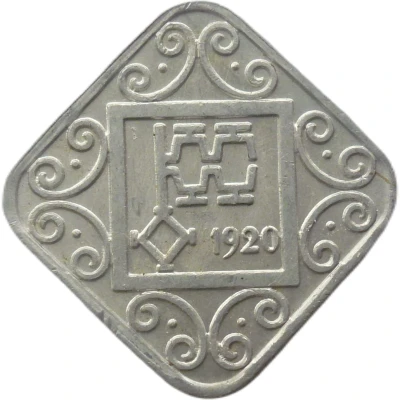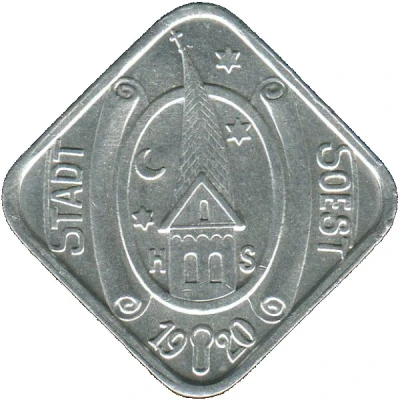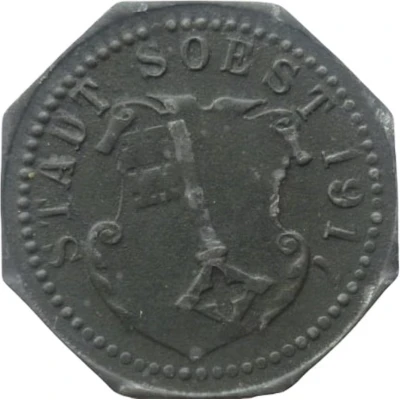
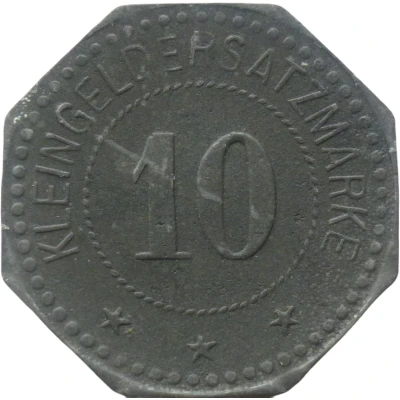

© Willem63 (CC BY-NC-SA)
10 Pfennigs - Soest
1917 year| Zinc | 2.3 g | 20.8 mm |
| Issuer | City of Soest (notgeld) (Prussian province of Westphalia) |
|---|---|
| Emperor | William II (Wilhelm II) (1888-1918) |
| Type | Standard circulation coin |
| Year | 1917 |
| Value | 10 Pfennigs (10 Pfennige) (0.10) |
| Currency | Mark (1914-1924) |
| Composition | Zinc |
| Weight | 2.3 g |
| Diameter | 20.8 mm |
| Thickness | 1.5 mm |
| Shape | Octagonal (8-sided) |
| Technique | Milled |
| Orientation | Medal alignment ↑↑ |
| Demonetized | Yes |
| Updated | 2024-10-04 |
| Numista | N#313506 |
|---|---|
| Rarity index | 92% |
Reverse
Pearl rim, legend surrounding rope circle with denomination centered
Script: Latin
Lettering:
KLEINGELDERSATZMARKE
10
★ ★ ★
Edge
Plain
Interesting fact
One interesting fact about the 10 Pfennigs - Soest 1917 coin is that it was made of zinc, which was a unusual choice of material for coins at that time. Most coins were made of metals like copper, silver, or gold, but the use of zinc in this coin reflects the economic and political circumstances of the time. The First World War had caused a shortage of traditional coinage metals, leading to the use of alternative materials like zinc and aluminum in the production of coins. This fact not only highlights the historical context in which the coin was produced but also showcases the resourcefulness and adaptability of the people of Soest during a time of crisis.
